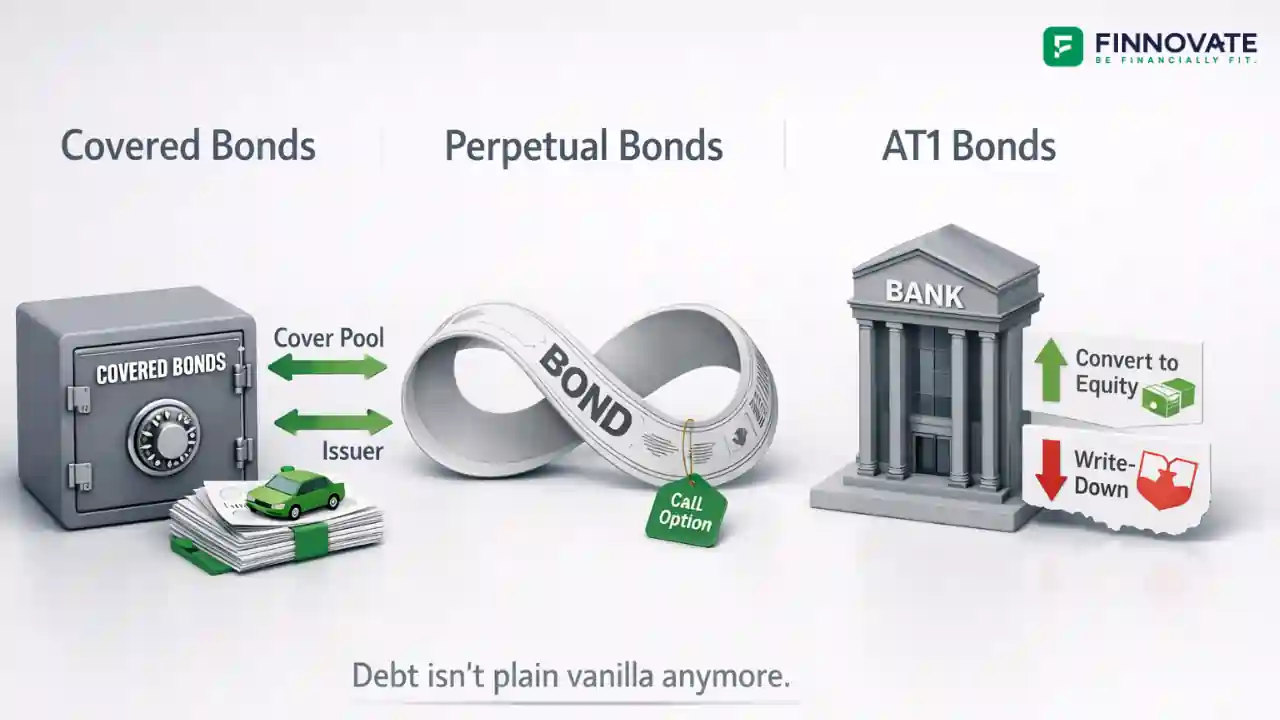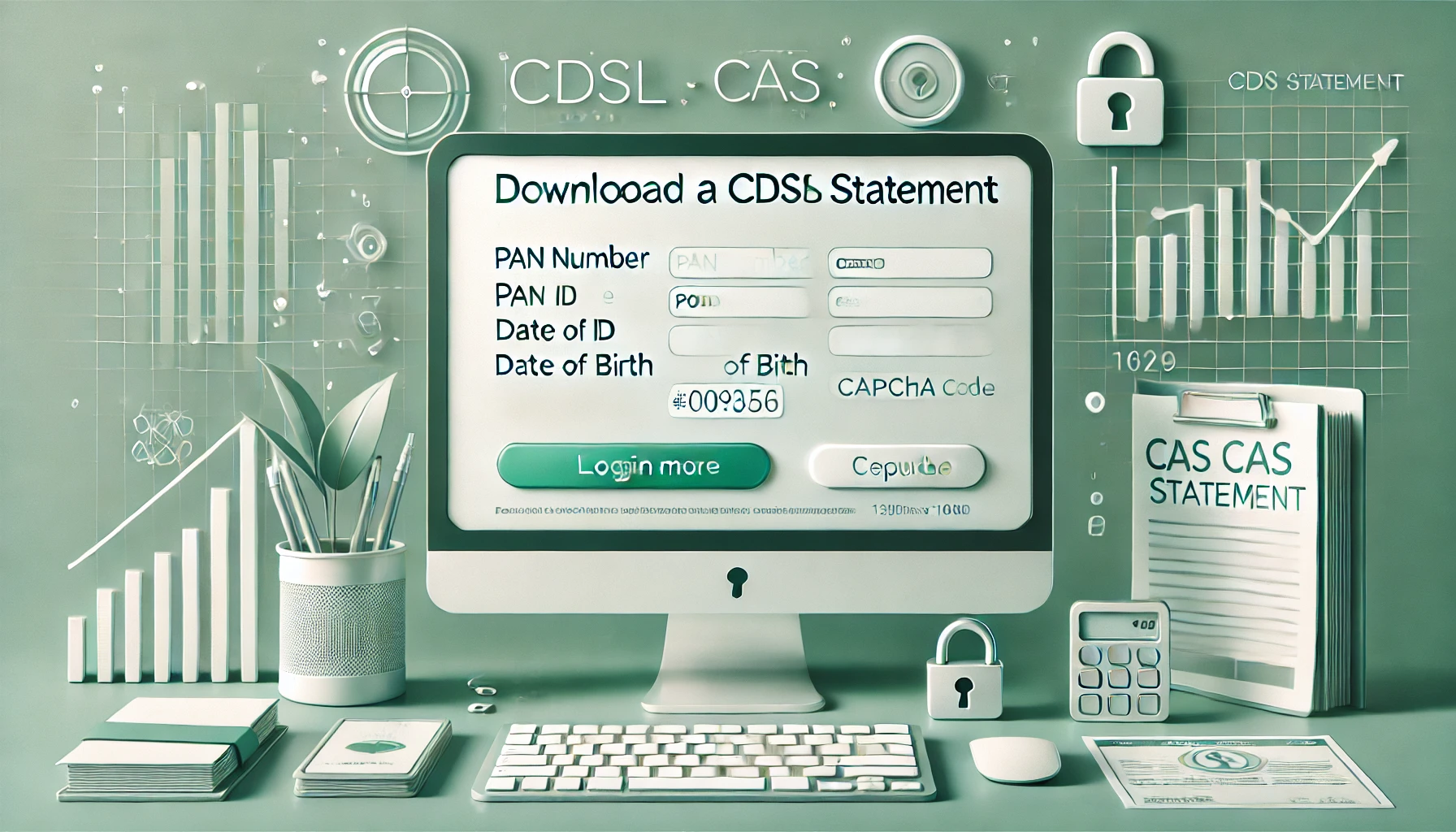
Covered Bonds vs Perpetual vs AT1 Bonds Explained
Covered bonds, perpetual bonds, and AT1 bonds look similar but behave very differently. Le...
You’ve got ₹10 lakh sitting idle.
You want it safe, you want some liquidity, and of course, you want decent returns.
So, you go ahead and put it all into a 5-year Fixed Deposit (FD). Feels like a smart move, right?
But six months later, the RBI hikes interest rates and now new FDs are offering 1% more than what you locked in.
Suddenly, your “safe” decision feels like a missed opportunity.
That’s where the FD Laddering strategy comes in - a simple yet powerful way to earn better returns, stay liquid, and avoid locking your money at the wrong time.
Let’s break it down.
FD Laddering simply means dividing your total investment across multiple FDs with different maturity periods - instead of locking everything into one long-term deposit.
For example, suppose you have ₹10 lakh. Instead of putting all of it into a single 5-year FD, you could do this:
Now, every year one FD matures.
You can either withdraw it if you need the money, or reinvest it into a new 5-year FD at the latest interest rate.
Over time, you’ll always have one FD maturing each year like the steps of a ladder - giving you a mix of liquidity and long-term compounding.
Think of it as climbing a staircase where each step unlocks cash flow without breaking the entire structure.
India’s interest rates don’t stay still. They move in cycles - rising when inflation is high and falling when growth slows.
So, locking all your money at one rate means you could either:
FD laddering smooths this out. When one FD matures each year, you can reinvest at the prevailing rate - capturing rate hikes over time.
But that’s not the only advantage in an Indian context:
In short, it fits perfectly with the Indian mindset: safety first, but smarter.
Here’s a simple step-by-step example for ₹10 lakh:
After five years, all your deposits will be earning the long-term 5-year rate - and one FD will mature every year thereafter.
Let’s look at why smart savers prefer this approach:
Basically, it gives your fixed deposits a bit of flexibility - without losing their stability.
FD laddering is not just a “nice trick” - it’s a timing strategy that suits specific needs.
It works best when:
Example:
Dr. Mehta, a 45-year-old cardiologist, parks ₹15 lakh from his annual profits into a ladder. Each year, one FD matures - giving him funds to renew clinic equipment or pay advance tax without touching his investments.
Like every strategy, FD laddering has its flipside:
So, it’s not about chasing high returns - it’s about structuring safety smartly.
| Feature | FD Ladder | Debt Mutual Funds |
|---|---|---|
| Risk Level | Very Low | Low–Moderate |
| Liquidity | Annual or on maturity | T+1 (next-day redemption) |
| Taxation | Slab rate | Slab rate (for funds bought after Apr 2023) |
| Return Type | Fixed | Market-linked |
| Ideal For | Safety-focused investors | Slightly aggressive investors |
Debt mutual funds offer flexibility and liquidity, but if you prefer guaranteed returns and predictable cash flow, laddering remains the simpler choice.
Curious how systematic investments compare over time? Try our SIP Calculator to see how monthly mutual fund investments can complement your fixed-income ladder for better overall portfolio balance
Smart investors don’t just save - they structure their savings.
FD laddering isn’t about beating the market.
It’s about bringing discipline, liquidity, and peace of mind into your savings - so you’re never stuck when rates change or emergencies strike.
It’s the perfect middle ground between safety and flexibility - and a small step toward a financially fit life.
Disclaimer: This article is for educational purposes only and does not constitute investment, tax, or legal recommendation. Fixed Deposit rates and rules may change over time. Please consult a SEBI-registered financial advisor before making investment decisions.
Finnovate is a SEBI-registered financial planning firm that helps professionals bring structure and purpose to their money. Over 3,500+ families have trusted our disciplined process to plan their goals - safely, surely, and swiftly.
Our team constantly tracks market trends, policy changes, and investment opportunities like the ones featured in this Weekly Capsule - to help you make informed, confident financial decisions.
Learn more about our approach and how we work with you:
Popular now

Learn how to easily download your NSDL CAS Statement in PDF format with our step-by-step g...

Explore what Specialised Investment Funds (SIFs) are, their benefits, taxation, minimum in...

Learn How to Download Your CDSL CAS Statement with our step-by-step guide. Easy instructio...

Looking for the best financial freedom books? Here’s a handpicked 2025 reading list with...